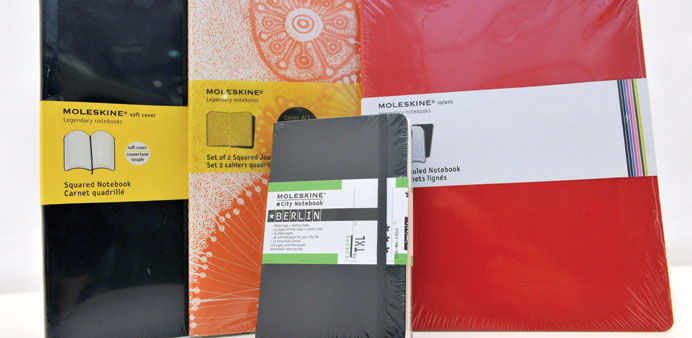By Stefanie Koller
To lose a passport was the least of one’s worries. To lose a notebook was a catastrophe.” Those words were written by the British novelist and travel author Bruce Chatwin (1940-1989) in his book The Songlines from 1987.
Since Chatwin’s day, notebooks have come in for stiff competition. Smartphones, tablets and notebook computers are a common way to record ideas, thoughts and appointments. And yet no self-respecting stationery store would refuse to stock notebooks made from paper.
Thomas Kirschmeier from the Rhinegold marketing institute says demand for classic notebooks is holding up.
“In a world where almost everyone has a smartphone, a tablet or a notebook for organising appointments and making notes, the classic notebook is a clear alternative.” It stands in diametrical opposition to the digital world.
“It pacifies the daily grind and helps to slow the mental processes down. That’s something a lot of people like to do.”
There’s an endless array of brands on the market such as Paperblanks, Alpha Edition, Leuchtturm 1917, Ciak — and Moleskine.
The Italian firm has grown rapidly over the past years. It recently became a publicly owned company with a debut on the Milan stock exchange. Experts say one reason the company is so successful is thanks to a clever advertising campaign.
“Moleskine is the heir to all of the legendary notebooks owned by artists and intellectuals of past 200 years. From Vincent Van Gogh to Pablo Picasso, from Ernest Hemingway to Bruce Chatwin,” says the company on its Internet page.
“The link to prominent names and long dead poets and philosophers leads you back to old values,” explains Kirschmeier.
Brand expert Oliver Hupp from the market research institute GfK says the key to turning a simple product like a notebook into a success story is to transform it into a trend.
The driving force behind that change at Moleskine, according to the company, was Maria Sebregondi. She discovered Chatwin’s works and suggested the small Milan publisher Modo & Modo should begin producing the notebooks again.
In The Songlines, Chatwin writes that he used to buy his notebooks in a small shop in Paris until the maker died. The heirs sold the business and the notebooks were no more.
“In France, these notebooks are known as carnets moleskines: ‘moleskine,’ in this case, being its black oilcloth binding,” wrote Chatwin. “The pages were squared and the end-papers held in place with an elastic band.”
The new Moleskine notebooks first went on sale in 1997. Last year 15mn notebooks and other Moleskine products were sold.
Business increased 17% and sales of €78mn were made. The main markets are Europe, the Middle East and Africa but growth is fastest at the moment in the United States and China.
Along with the classic notebook, Moleskine also makes calendars, bags and pens. Over 90% of Moleskine’s business is from paper products. “Things that you need for organising your private life like high quality pens go well with Moleskine,” says Kirschmeier. “I think the one thing Moleskine cannot do is get involved with the digital world.” – DPA



